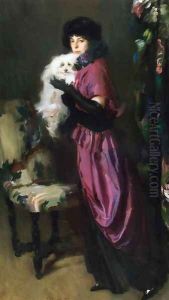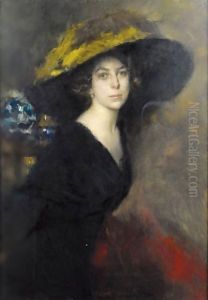Albrogio Alciati Paintings
Ambrogio Alciati was an Italian artist known for his paintings and frescoes. Born in 1878 in Domodossola, a small town in the Piedmont region of Italy, Alciati displayed an early talent for art that would lead him to become a prominent figure in the Italian art scene of the early 20th century.
After initial training in Italy, Alciati furthered his studies at the Accademia di Belle Arti di Brera in Milan, which was one of the most prestigious art schools in Italy at the time. His time at the academy allowed him to hone his skills and adopt a style that was influenced by the prevailing trends of the period, including symbolism and, later, elements of futurism.
Alciati's career was marked by a diverse range of works, including religious and historical subjects, as well as portraits and landscapes. He was particularly appreciated for his frescoes, a medium that allowed him to express his artistic vision on a grand scale. His frescoes can be found in various public buildings and churches throughout Italy.
During his lifetime, Alciati was involved in various exhibitions and artistic circles that helped to establish his reputation as a painter. His works were included in shows not only in Italy but also internationally, exposing him to a broader audience and allowing his style to evolve over time.
Unfortunately, Ambrogio Alciati's life was cut short when he died in 1929. Despite his relatively brief career, he left behind a body of work that continues to be studied and admired for its contribution to the Italian art of the period. Alciati's paintings and frescoes remain a testament to his artistic skills and the cultural vibrancy of Italy during the late 19th and early 20th centuries.

